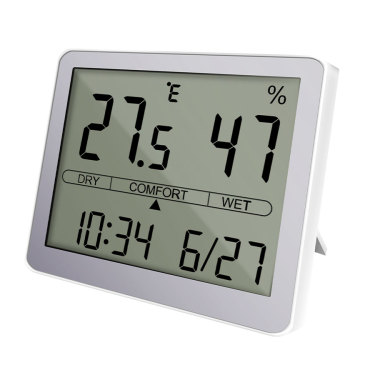
# Indoor Outdoor Thermometer for Accurate Temperature Monitoring
## Why You Need an Indoor Outdoor Thermometer
An indoor outdoor thermometer is an essential tool for anyone who wants to monitor temperature conditions both inside and outside their home or workplace. These versatile devices provide real-time readings that help you make informed decisions about heating, cooling, and outdoor activities.
Unlike standard thermometers that only measure one environment, dual-purpose models give you a comprehensive view of your surroundings. Whether you’re a gardener tracking microclimates, a homeowner optimizing energy efficiency, or simply someone who wants to dress appropriately for the weather, these thermometers offer valuable data.
## Key Features to Look For
Wireless Connectivity
Modern indoor outdoor thermometers often feature wireless technology, allowing the outdoor sensor to transmit data to the indoor display unit without cumbersome wires. Look for models with a strong transmission range (typically 100-300 feet) that can penetrate walls and windows.
Multiple Sensors
High-quality units support multiple outdoor sensors, enabling you to monitor different zones around your property. This is particularly useful for large homes, gardens, or commercial spaces where temperature variations matter.
Data Logging
Advanced models include memory functions that track temperature trends over time. This historical data helps identify patterns and make long-term adjustments to your living or working environment.
## Benefits of Accurate Temperature Monitoring
Maintaining proper indoor temperatures can significantly impact your comfort, health, and energy bills. An indoor outdoor thermometer helps you:
- Optimize HVAC system performance
- Prevent frozen pipes in winter
- Protect sensitive plants from extreme temperatures
- Plan outdoor activities more effectively
- Monitor conditions for pets left outdoors
## Installation and Maintenance Tips
Sensor Placement
For accurate outdoor readings, place the sensor in a shaded area protected from direct sunlight and precipitation. Avoid locations near heat sources or reflective surfaces that could distort measurements.
Battery Life
Most wireless models operate on batteries. Choose thermometers with low-battery indicators and consider lithium batteries for extreme temperature conditions, as they perform better than alkaline in cold weather.
Calibration
While modern digital thermometers are generally accurate, it’s good practice to occasionally verify readings against a known accurate source, especially if you notice inconsistencies.
## Choosing the Right Model for Your Needs
The market offers various indoor outdoor thermometers ranging from basic analog models to sophisticated digital systems with smartphone connectivity. Consider your specific requirements:
| Feature | Basic Model | Premium Model |
|---|---|---|
| Temperature Range | -20°F to 140°F | -40°F to 150°F |
| Humidity Sensor | No | Yes |
| Wireless Range | 100 feet | 300 feet |
| Display Backlight | No | Yes |
Investing in a quality indoor outdoor thermometer provides valuable environmental data that can improve your daily life. With proper selection and placement, you’ll enjoy accurate temperature monitoring for years to come.